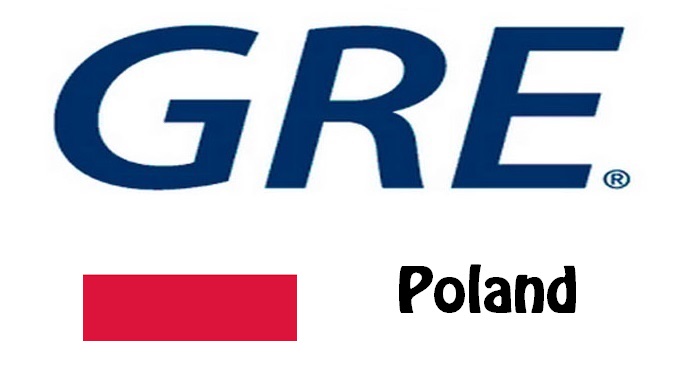GRE Testing Locations
Decided to take GRE exam? Now it is time to determine where to take the test. This site provides a full list of GRE testing centers in Poland, among which, you can choose one that is nearest to you. Good news is that the following GRE test locations in Poland offer both GRE general test and the GRE subject tests.

- WARSAW, POLAND – APCU-8295
VISTULA UNIVERSITY, Stoklosy 3, First Floor, Room 135, Warsaw
Poland 02787
Computer Based Test
GRE Test Dates
There are two types of test format offered by the test maker – ETS: Computer-delivered and Paper-delivered GRE general tests. For computer based test format, the GRE General Test is offered year-round on a continuous basis, and available for registration on a first-come, first-served basis. For paper based general test, testing is available three times per year. The following test dates apply:
| Test Dates for Paper Based | Deadlines for Registration | Scores Available |
|---|---|---|
| November 09, 2019 | October 4, 2019 | December 20, 2019 |
| February 1, 2020 | December 27, 2019 | March 13, 2020 |
GRE Subject Tests in Poland
The GRE Subject Tests are available on paper based only. In all GRE test centers throughout the world (both inside and outside United States), the exam is available three times a year. The three test dates are:
- April
- September
- October

More about Poland
Geography
About three quarters of Poland consists of lowlands. They were mainly formed during the last ice age. The Vistula is the most important river in Poland. It separates the Pomeranian Lake District in the west from the Masurian Lake District in the east. The Baltic Sea coast in northern Poland is a flat, sandy coast with numerous spits, harbors and beach lakes. Southwest of the central Polish lowlands, the country is part of the low mountain range of the Sudetes. In the extreme south, the foothills of the Carpathian Mountains encroach on Poland. The highest mountain in Poland rises here in the 2,499 m high Meeraugspitze.
There is a temperate climate with rainfall in all seasons. The winters are colder in Poland, the summers hotter than in Germany. To the east, the seasonal temperature differences increase and the winters become drier. As in Germany, around half of the country’s area is used by agriculture as arable and pasture areas. Forests cover around 30% of the country’s area. Remnants of a central European primeval forest are preserved in the Bialowiezer Heide in the border area with Belarus. The Bialowiezer Heide is one of the 23 national parks in Poland.
Poland has made great strides in environmental protection. Considerable amounts of air and water pollutants are still being released in the industrial areas of Upper Silesia and in the Gdansk and Lodz area. The coal-fired power plants put a heavy burden on the atmosphere with climate-damaging CO₂. From 1980, the modernization of the operations brought about a significant reduction in CO₂ emissions from 11.7 tonnes per capita to (2016) 7.6 tonnes (Germany: 8.9 tonnes).
Population and Religion
Poland has 38 million residents (2018). That roughly corresponds to the population of Canada. Compared to Germany, the population is ethnically composed and almost exclusively belongs to the Poles. There are also minorities of Germans, especially in Upper Silesia, as well as Ukrainians and Belarusians. Only a few foreigners live in Poland (0.9% of the total population). Almost half of them come from Ukraine. The population is very unevenly distributed. Most Poles live in the industrial regions in the south and in the greater Warsaw, Krakow, Lodz and Gdansk areas.
The northeast, on the other hand, is only very sparsely populated. Since agriculture still plays a major role, 40% of Poles live in small rural villages, only 60% in cities (Germany: 77%).
Most of the Poles (86%) are Roman Catholic. The Catholic Church plays an important role in society. Before his papal election (1978), John Paul II (* 1920, † 2005) was Archbishop of Krakow. The Catholic Church has supported the move away from the communist system of government. In 1990 religious education was reintroduced as a school subject. The abortion law in Poland is one of the strictest in Europe.
In Poland, the difference between the poorer and richer sections of the population is growing. In particular, the rural population and the rapidly increasing number of retirees have little income. Since 2004, around two million mostly young Poles have left the country in search of well-paid jobs. As a result, there is now a great shortage of skilled workers in Poland.
